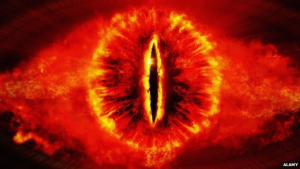We are visual animals. Sight is our most developed sense. We must see to believe but what we see is not what we perceive. Something gets in the way sometimes.
Have you heard the term “Can’t see for looking”?
This happens because what we perceive is influenced by what we expect to see. We can prime our perception by setting an expectation – and we can see faces in the flames.
So, if we don’t expect to see something we can be looking at something but not perceive it.
And if we don’t believe something can exist we can see something and perceive it as something else.
We can be visually deceived – and this weakness is exploited by illusionists and magicians.
So, how can we avoid this cognitive trap?
One way is to look at something from more than one perspective. What is hidden from one view may be plain to see from another. This is one reason why we have two eyes that look in about the same direction – the two slightly different perspectives allow us to perceive depth.
Another tactic is to observe over time and look for movement. In fact our eyes do this automatically because movement in our peripheral vision will alert us. We can also use movement to perceive depth – even with only one eye. The eye is a very sophisticated bit of evolved opto-neural engineering.
What about our mind’s eye?

Our mind’s eye is not actually an eye. It is not even a picture in the same sense as a camera would record. The images we conjure up when our eyes are closed are reconstructions. They are an output of our mental model, just as thoughts and decisions are. Our mind’s eye is what we expect to see.
And this is a massive asset because it allows us to compare expectation with experience and to look for differences. That takes a lot less neural processing and is much faster – so gives us a survival advantage.
But, if our mental model is not accurate then what we expect to see is not accurate and the gap between expectation and experience gets bigger. And if that gap gets to wide then we just feel a sense of confusion. The “Eh?” effect.
In that situation we have to choose between our mind’s eye and our real eye.
Some prefer their mind’s eye … they are called Intuitors.
Some prefer their real eyes … they are called Sensors.
And the inevitable outcome is conflict.
So, what can we do?
It is actually possible to use both – just not at the same time. And to do that we have to make the process conscious and deliberate. We can ask ourselves “What am I expecting to see?” and then “What am I actually seeing?”
And then we can ask “What might account for the gap?”
One possible and plausible cause is that we are making an unconscious assumption that is invalid and is generating an inaccurate expectation. This unrealistic expectation can distort our perception so much that we literally block out what we do not expect to see. And we may not even notice because all this neural processing happens outside of awareness. And it happens very fast. In the blink of an eye.
So, if we do not always accept perceptual distortion as a possibility then we may close our minds to learning.
We have a choice.
